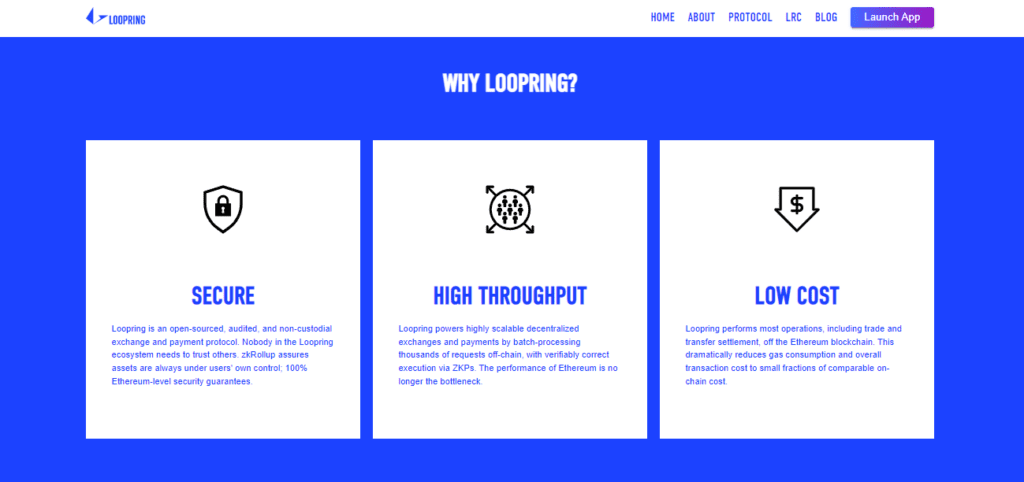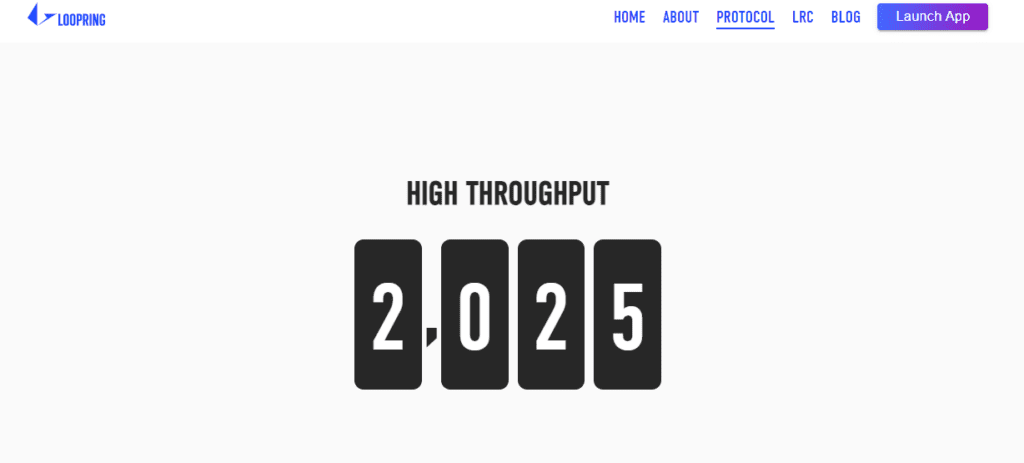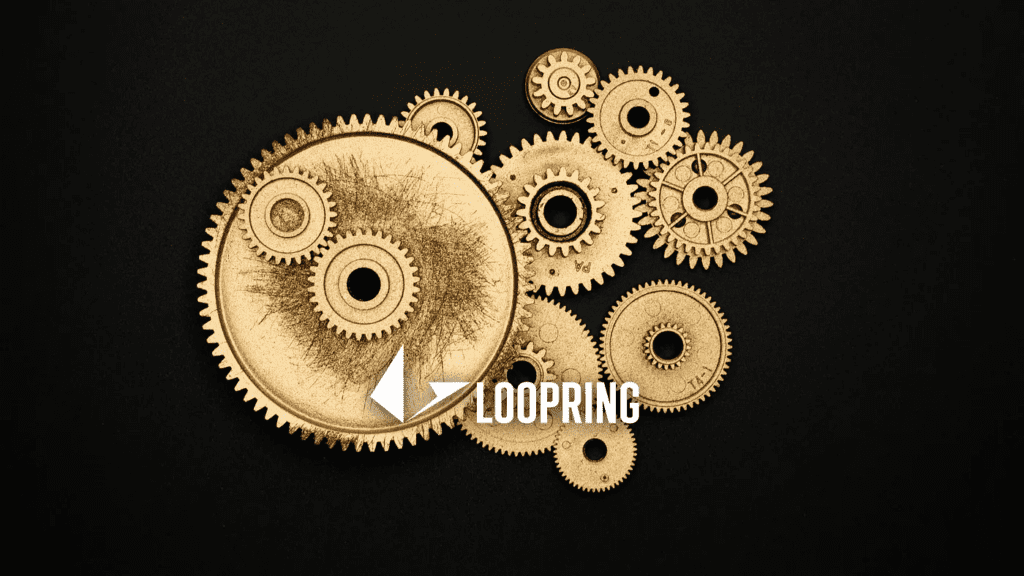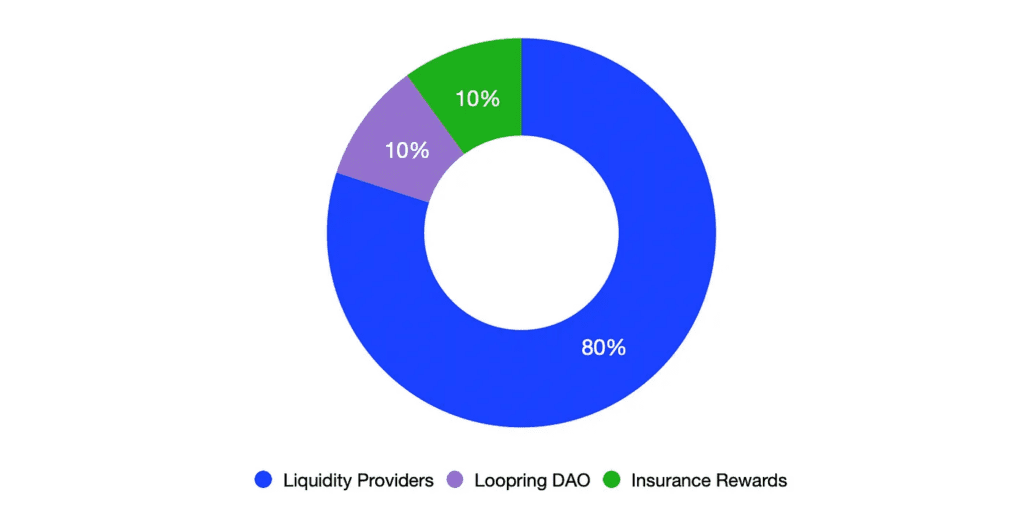Loopring Review: Unlocking The Benefits Of Loopring, 2024 Comprehensive Review
In this Loopring review article, we explore the innovative protocol that enables the creation of decentralized exchanges using zkRollups technology, providing greater scalability and cheaper commissions than Ethereum. We also dive into staking options and the LRC token, and analyze the pros and cons of the platform.
Introduction

What is Loopring
Loopring is a protocol that facilitates the creation of decentralized exchanges based on a sidechain using scalability and privacy technology known as zkRollups. The platform provides developers with tools to create DEX and remove the burden of transactions from the Ethereum chain, resulting in greater scalability and cheaper commissions. Using zkRollups technology, the network makes cheaper commissions than Ethereum and checks thousands of transactions on Ethereum using smart contracts. Loopring combines the best of the centralized exchange market with its low commissions and the transparency of an open and verifiable protocol.
Loopring History
The Loopring protocol was developed and managed by the Loopring foundation, a company founded by Daniel Wang, a software engineer and entrepreneur from Shanghai, China. Wang has an educational background in computer science, having obtained his bachelor’s degree from the University of Science and Technology of China, and his master’s degree from Arizona State University.
Prior to his work on Loopring, Wang held several managerial and senior positions in large technology companies. He was a lead software engineer at Boston Scientific, a medical device manufacturer, and a senior software engineer and tech lead at Google. He also served as the senior director of engineering, search, recommendation, and ad system at JD.com, a prominent Chinese e-commerce giant. In addition to Loopring, Wang co-founded other companies, including Yunrang (Beijing) Information Technology Ltd and Coinport Technology Ltd, a cryptocurrency services firm.

At present, the value of LRC sits at over $0.38, with its all-time high being $3.83 on November 1, 2021.
Loopring Protocol
Loopring protocol is a schema-independent, second-level scaling protocol designed to facilitate decentralized exchanges (DEX) and payment systems. It is currently operational with Ethereum, NEO, and Qtum blockchains and is a vital infrastructure supporting the DeFi network. The platform provides developers with tools to create DEX and remove the burden of transactions from the Ethereum chain, resulting in greater scalability and cheaper commissions. It is an open-source automatic token exchange protocol that runs on a secure, decentralized, high-performance protocol system. Loopring’s design guarantees protection against frontal attacks, Sybil attacks, distributed attacks, and other forms of fraud.
What Is zkRollups

zkRollups are a tool for scaling Ethereum that moves computation and transaction creation’s hard work outside the core Ethereum network. However, security is preserved by the cryptographic proof-of-concept, which validates thousands of transactions through a smart contract in Ethereum. In other words, the Ethereum blockchain creates proof-of-concept transactions on the Loopring off-chain network. As a result, users benefit from an effortless, fast, and secure solution.
With these capabilities, Loopring can conduct 100-200 times more transactions than Ethereum at a lower cost and with higher security than other solutions. The project’s official page claims a throughput of 2,025 transactions per second. Since the data is transmitted in a blockchain, the security is similar to Ethereum’s. Orders in the order book are executed using an “order ring,” where triangulation can occur between orders and different assets to close a set of transactions. The miners of these transactions are ring miners and receive a percentage of the transaction, almost like market makers.
Loopring’s ring order system and ring miners provide a solution that can conduct more transactions at a lower cost, making it an attractive option for network participants to provide liquidity.
How Does Loopring Work?
Loopring operates on a protocol that involves miners who perform essential tasks. Ring miners and ring orders play a crucial role in executing orders, and they receive a reward in exchange for their services. Traders, on the other hand, reimburse miners through a fee or order margin, with two options available:
- Order Reward – Traders can establish a maximum number of LRC tokens to be transferred to the miner as a reward for executing their order.
- Margin Split – Traders can specify the required margin for a particular order, allowing the miner to choose the commission and margin they prefer.
LRC Token

Loopring (LRC) is a native platform token that was launched in August 2017 as part of an initial coin offering (ICO) that raised $45 million in Ethereum (ETH). The funds were used to create the Loopring protocol, an open-source, decentralized exchange that allows users to trade cryptocurrencies without needing a centralized authority.
LRC is an ERC20 token based on the Ethereum network and serves to pay commissions on the network. It acts as an economic incentive for operators of sidechain nodes who perform necessary tasks like executing orders and verifying transactions. By using LRC tokens as a means of payment, Loopring incentivizes users to participate in the network and provides a secure and reliable platform for trading.
Staking pools are another important use case for LRC tokens. Staking participants must enter their tokens into the pools, which receive 70% of the protocol’s commission distribution. To qualify for this reward system, users must bet for at least 90 days to receive their proportional share of the commission. This incentivizes users to hold their tokens for longer, ultimately benefiting the network’s overall stability and security.
Initially, the distribution of protocol fees will be determined by the Loopring DAO, but it is configurable. The initial distribution of the protocol fees will be as follows:
80% of the fees will go to liquidity providers (LPs) who provide liquidity to Loopring orderbooks and AMMs. At least 50% of this portion will go to liquidity providers who use LRC. 10% of the fees will go to insurers who provide capital to the safety insurance fund. 10% of the fees will go to the Loopring DAO, which will decide how to utilize the funds. The DAO may use the funds for activities such as buyback and burn, protection against impermanent loss, further liquidity incentives, grants, and more.

Additionally, the technology of the Loopring protocol involves creating a new LRx token for each integrated chain, where “x” stands for blockchain. This allows for interoperability between different blockchains, enabling users to trade assets across multiple chains.
Loopring relies on a proof-of-work (PoW) algorithm to verify and generate new blocks on the network. Miners are rewarded with Loopring tokens for their efforts, which helps maintain the network’s security and integrity.
The LRC burn rate increases token scarcity by burning off some of the fees coming from wallets. In addition, it also burns off some of the miners’ fees. As a result, bidders betting on Loopring cryptocurrency (LRC) are entitled to lower transaction fees on the Loopring exchange. This mechanism helps to ensure that the value of LRC remains stable and that the network remains sustainable over the long term.
Token information
- Token Version: 2.0
- Token Address: 0xBBbbCA6A……ec7AEafD
- Token ENS: LRCTOKEN.eth
- ERC-20 Compliant: YES
- Decimals: 18
- Symbol: LRC
- Total Supply: 1,373,873,437
| Coin Name | Loopring |
| Coin Symbol | LRC |
| USD Price | $ 0.375 |
| Marketcap | $ 499,433,907 |
| 24h Volume | $ 66,468,447 |
| Total Supply | 1,373,873,437 |
In May 2019, the Loopring team migrated LRC from version 1.0 to version 2.0. It’s worth noting that LRC versioning is distinct from Loopring protocol versions, and the update pertained to the token itself, which is utilized in Loopring protocol 3.0 and beyond.
LRC serves as the native token of the Loopring protocol, providing incentives for desirable behavior from liquidity providers, insurers, and DAO governors. The protocol fees are generated from Loopring L2 economic activity and distributed to productive network participants and the LRC token itself.
How to Stake LRC Tokens?
Loopring (LRC) offers three types of staking to its users, allowing them to earn rewards and participate in the network’s governance:
- Pool Betting Protocol (global): This staking option is available to everyone, and users can bet on LRC tokens to earn 70% of the Loopring protocol fees. No minimum amount is required to participate, but tokens must be locked for at least 90 days to qualify for the reward system.
- Owner betting on the exchange: This staking option is intended for the owners of Loopring exchanges, who are required to bet on LRC tokens to ensure the security and reputation of the decentralized exchange (DEX). The minimum amount for this type of staking is 250,000 LRC, but it can go as high as 1 million LRC depending on the type of exchange. The LRC tokens must be kept under lock and key for the duration of the protocol on the exchange.
- Reduced commission on an exchange: This staking option is available for traders on the Loopring exchange. The exchange owner pays the protocol fees for orders, but traders must pay transaction fees for each trade. Traders can pay the transaction fee with the same token as the transaction, and the fee can be reduced if the trader bets on LRC tokens.
Each staking option comes with its own set of requirements and rewards, allowing users to choose the staking method that best suits their needs and preferences. Staking LRC tokens allows users to earn rewards, helps secure the network, and promotes its growth and development.
Loopring (LRC) is an ERC-20 token, which means that LRC can be stored in any cryptocurrency wallet that supports ETH and ERC-20 tokens. Various types of cryptocurrency wallets are available in the market, such as mobile, online, hardware, and desktop wallets.
Among the many wallet options, Guarda offers an excellent solution for storing, buying, and selling LRC tokens. Using the Guarda wallet ensures a secure and reliable storage solution with user-friendly functionality. Moreover, Guarda wallet is accessible on multiple platforms, including Windows, Mac, Android, iOS, and browsers, making it convenient for LRC holders to manage their tokens.
Pros and Cons
| Pros | Cons |
| Loopring is a schema-independent, second-level scaling protocol designed to facilitate decentralized exchanges and payment systems, resulting in greater scalability and cheaper commissions. | Loopring relies on a proof-of-work (PoW) algorithm to verify and generate new blocks on the network, which may result in a higher environmental impact compared to proof-of-stake (PoS) algorithms. |
| Loopring uses zkRollups technology, which allows for 100-200 times more transactions than Ethereum at a lower cost and with higher security than other solutions. | Loopring’s protocol fees are generated from Loopring L2 economic activity and distributed to productive network participants and the LRC token itself. This may result in a more centralized distribution of rewards compared to other decentralized protocols that use a more democratic governance model. |
| Loopring’s ring order system and ring miners provide a solution that can conduct more transactions at a lower cost, making it an attractive option for network participants to provide liquidity. | Loopring’s ring order system may be more complex than other decentralized exchanges, resulting in a steeper learning curve for users. |
| Staking LRC tokens allows users to earn rewards, helps secure the network, and promotes its growth and development. | |
| Loopring (LRC) is an ERC-20 token, which means that LRC can be stored in any cryptocurrency wallet that supports ETH and ERC-20 tokens, including Guarda wallet. |
Conclusion – Loopring Review
In conclusion, Loopring is a promising protocol offering a decentralized cryptocurrency exchange solution. The use of zkRollups technology allows for greater scalability and cheaper commissions compared to Ethereum, and the protocol’s design ensures protection against various types of fraud. Additionally, users can stake LRC tokens to earn rewards and participate in the network’s governance. As Loopring continues to evolve and improve, it presents an attractive option for those interested in the DeFi network and cryptocurrency trading.
DISCLAIMER: The Information on this website is provided as general market commentary and does not constitute investment advice. We encourage you to do your own research before investing.
Join us to keep track of news: https://linktr.ee/coincu
Thana
Coincu News
















